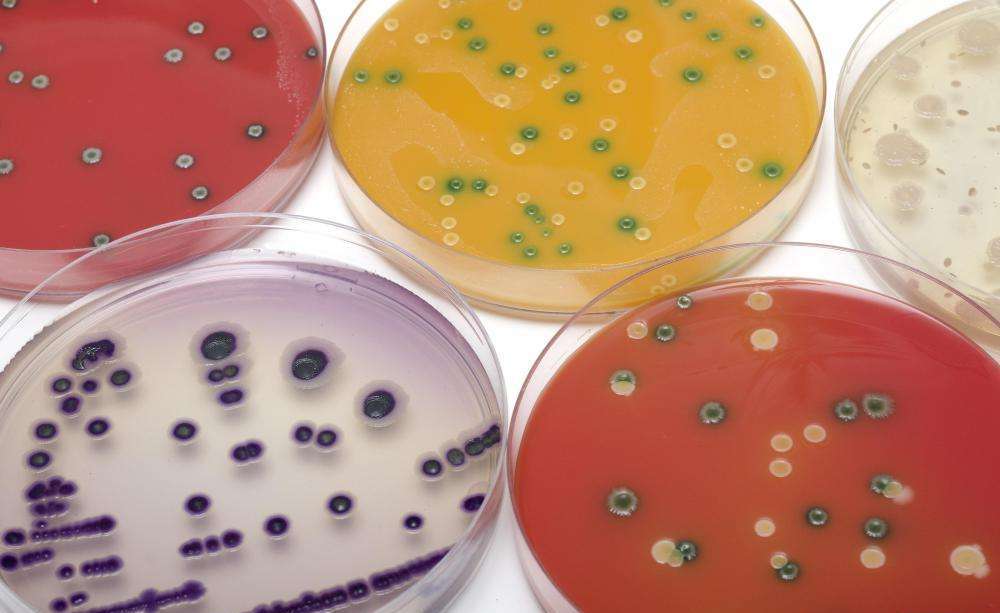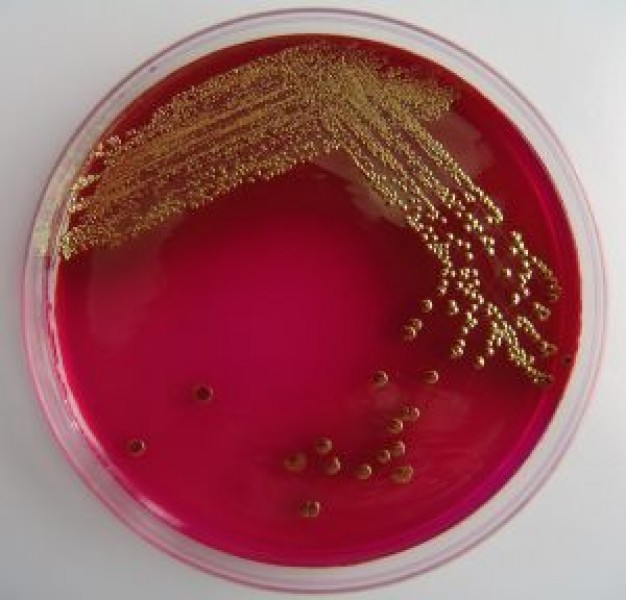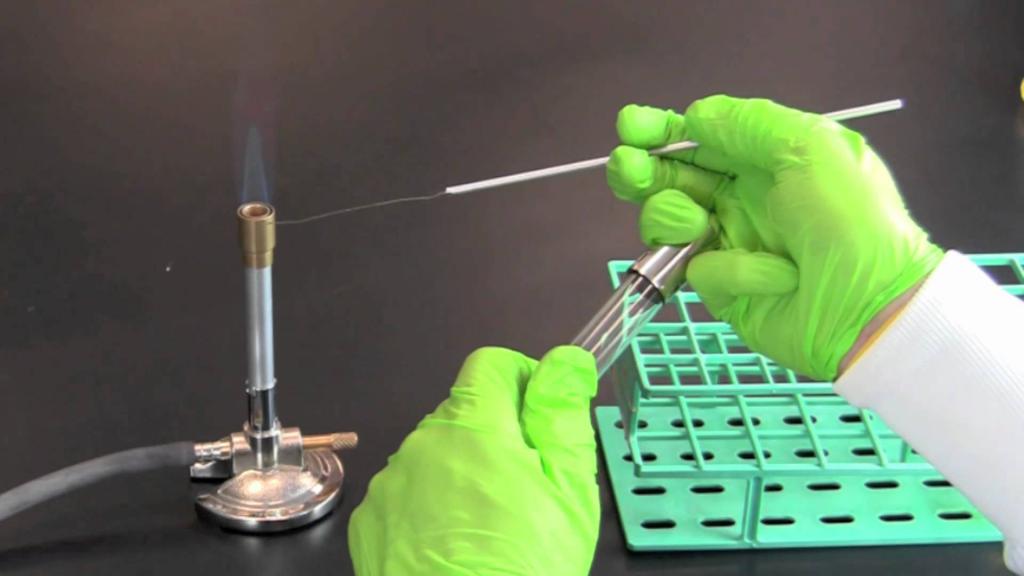Microorganisms in the nature around us are everywhere: in soils, ponds, on the surfaces of various objects, they are inhabited by people and animals. All this can serve as sources of microbial contamination of food, medicine, production lines. The cultivation of bacteria is necessary to study their properties, needs, characteristics. This, in turn, is an important step in the development of various drugs, laboratory diagnosis of diseases, calculation of production reactors and much more.
General concepts
Under the cultivation of bacteria in microbiology is understood the cultivation of microorganisms carried out in laboratory conditions. In turn, the microbes that grew on the selected nutrient medium are called culture. Cultures can be mixed if they are formed by different types of microorganisms, and pure if they are represented by only one type of bacteria.
If only one cell is placed in a nutrient medium , and a group of individuals is obtained as a result of its propagation, then this set of microorganisms is called a clone. When a clone develops to such a level that it becomes visible to the naked eye, this accumulation of bacteria is called a colony.
Typically, the cultivation of bacteria isolated from various sources is carried out separately from each other. Each such separately grown group of microbes is called a strain. So, if one type of staphylococcus is isolated from three sources (or different portions of the same product, different people), they speak of three strains of this type of staphylococcus.
Bacteria growth factors
These include various amino acids, lipids, purine bases and other compounds necessary for the development of microorganisms. Some microbes can independently produce the substances they need, while others need to get them ready-made. According to the needs of microorganisms for various growth factors, identification and differentiation of bacteria is carried out. Also, this parameter is important for the proper production of a nutrient medium in order to conduct laboratory and biotechnological work:
- Amino acids. Bacteria may need one specific amino acid or any group of acids. So, clostridia needs leucine and tyrosine, streptococci - leucine and arginine. Microorganisms that require the production of amino acids from the outside for growth are called auxotrophic.
- Purine and pyrimidine bases, as well as their derivatives (adenine, guanine, and others). They are an important growth factor for many types of streptococci.
- Vitamins They are part of the coenzymes required by bacteria. So, nicotinic acid, as well as its amide, which are part of NAD and NADP, is needed for the corynebacterium diphtheria, shigella. Thiamine, as an integral part of pyrophosphate, is required for Staphylococcus aureus, pneumococcus, and brucella. Pantothenic acid, part of the coenzyme CoA, is required for tetanus bacilli and certain types of streptococcus. Cytochromes, and hence the folic acid, gems and biotin that form them, are necessary for mycobacterium tuberculosis and hemophilic bacteria.

Environmental requirements
Conditions for bacteria culture media:
- Nutritional value. They must contain substances, moreover, in easily digestible form, which are necessary for microorganisms to nourish and replenish energy. These include organogens and minerals. For some microorganisms, vitamins and amino acids are additionally needed, which they cannot synthesize.
- Optimum pH. It affects the permeability of the cell membrane and, accordingly, the possibility of assimilation of nutrients by the bacterium. Most often, the value of the hydrogen index should be at the level of 7.2–7.4. Many microorganisms in the course of their life produce products with acidic or alkaline reactions, and in order for the pH of the nutrient medium to not change, it must have buffering.
- Isotonicity. The osmotic pressure in the culture medium for the cultivation of bacteria should have the same values as inside microbial cells. Usually it corresponds to a 0.5% NaCl solution.
- Sterility. This is due to the fact that the appearance of foreign bacteria will distort the results of a study of the analyzed strain.
- Humidity level. This indicator, along with the consistency of the medium, should have optimal characteristics for a particular type of bacteria.
- Redox potential (RH2). It shows the ratio of substances that give and that take the electrons, as well as the level of oxygen saturation of the nutrient medium. For aerobes and anaerobes, the conditions for the cultivation of bacteria vary somewhat in this indicator. Anaerobic microorganisms reproduce best with RH2 values not exceeding 5, and aerobic ones not less than 10.
- Uniformity. It is important that the culture medium contains constant amounts of its individual ingredients. In addition, transparent solutions are preferred, on which it is easier to track the growth of the culture or notice its contamination.

Types of Culture Media
The choice of a particular medium for the cultivation of microorganisms is influenced by many factors, among which are the features of their nutrition and the purpose of the study. The main features underlying the classification of nutrient media are:
1. Components. The starting materials used to create the substrate are distinguished:
- natural, which are prepared from products of animal or vegetable origin (for example, meat, milk, fruit) and are suitable for growing mixed crops;
- semi-synthetic, in which expensive natural food products are replaced by non-food ones (for example, bone meal, blood clots), and which are optimal for the cultivation of certain species of bacteria or isolation of their metabolic products from the environment;
- synthetic, which are prepared from exact amounts of chemical compounds, have a known constant composition and are easily reproducible.
2. Consistency (density). Distinguish environments:
- liquid;
- dense;
- semi-liquid.
The last two are prepared from special solutions or liquid substances with the addition of agar-agar or gelatin to create the required density. In addition, a dense medium for the growth of bacteria is coagulated blood serum, potatoes, media with silica gel, carrageenan.
3. Composition. On this basis of the environment are:
- simple, the list of which is short - it is meat-peptone broth (MPB), Khottin-gera broth and agar, meat-peptone agar (MPA), nutritious gelatin and peptone water.
- complex, prepared from simple ones with the addition of blood, serum, carbohydrates and other substances.
4. Appointment. The following culture media are distinguished:
- the main ones are used to grow many pathogenic microbes (usually of a simple composition);
- special ones are used for the isolation and cultivation of bacteria that do not grow on simple substrates;
- elective (they are selective) are suitable for isolating a specific type of bacteria and inhibit the growth of concomitant microbes (selectivity is created by adding certain substances to the media, for example antibiotics or salts, or by adjusting the pH);
- differential diagnostic ones make it possible to distinguish one type of bacteria from another by assessing enzymatic activity, for example, medium;
- preservatives are needed for initial seeding with subsequent transportation of samples, since they prevent the death of microorganisms, and also inhibit the growth of other bacteria.
Preparation of culture media
The most important stage in the cultivation of anaerobic bacteria is the preparation of a suitable nutrient medium. After the optimal parameters are selected, they proceed to the following stages:
- weighing by selecting a sample of components on an analytical balance;
- dissolution carried out in distilled water heated to 70 ° C, and separately dissolving phosphates, micro and macro salts;
- boiling carried out in a water bath for two minutes;
- pH determination by indicator paper or potentiometer;
- filtration through wetted cloth or paper filters for liquid as well as molten solid media, and through a cotton-gauze filter for agar;
- bottling performed at 3/4 capacity;
- sterilization depending on the composition of the medium;
- sterility control is carried out by settling for two days in a thermostat with subsequent viewing;
- chemical control to establish the pH and content of the necessary elements;
- biological control by trial seeding.
Sterilization of dishes and environments
One of the basic principles of bacterial culture is sterility. The growth and development of extraneous microorganisms can affect the characteristics of the nutrient medium by changing its chemical composition and pH. Sterilization is the main condition for growing pure crops. In practice, this term means methods of destroying absolutely all life forms on the surface and in the volume of sterilized objects. Dishes are subjected to sterilization, the tools used, the environment, as well as other items used during the study.
Some types of sterilization:
- Calcination. Sterilization of loops and needles for sowing, glass slides, some tools can be performed using a burner or spirit lamp.
- Boiling. Suitable for processing syringes, needles, food, but does not kill bacteria spores.
- Dry heat sterilization. It is carried out in a special drying cabinet and is suitable for processing flasks, test tubes and other laboratory glassware.
- Steam sterilization. Autoclaved, this method is highly efficient. But it is not suitable for culture media, which include proteins or any other compounds that break down at high temperatures. Tyndalization can be called more sparing. It is held in the Koch boiler and combines the germination of spores with their destruction.
- Pasteurization. It is used for environments that change their properties during boiling (for example, milk, wine, beer), can rid them of non-spore-forming microorganisms. The processing temperature is only 50-60 ° C for fifteen to thirty minutes. In some cases, cold sterilization using filters or UV rays is used.

Bacterial Culture Conditions
The growth and development of bacteria is possible only with certain factors and the values of each of them:
1. The temperature. There are three groups of bacteria that differ in temperature preferences:
- thermophiles, or thermophilic microbes, grow at 45-90 ° C, which means that they do not multiply in human and animal organisms;
- psychrophiles, or cold-loving microorganisms, prefer a temperature in the range of 5-15 ° C and are grown in refrigerated chambers;
- mesophiles develop at a temperature of 25-37 ° C, the bulk of bacteria belongs to them.
2. The light. It is a feature of the cultivation of bacteria-phototrophs, because they carry out the photosynthetic process. But for most microbes, lighting is not a prerequisite. And even vice versa, solar ultraviolet can inhibit their development.
3. Water. All microorganisms need water in an accessible (liquid) form. That is why bacteria practically do not develop in frozen foods.
4. The acidity of the medium. This principle of cultivating bacteria has already been discussed in detail above.
5. Aeration. Oxygen, as a chemical element, is an integral part of water and a considerable number of compounds used for growing microorganisms. Oxygen gas may also be present in dissolved form in water and other liquids. A significant part of bacteria needs a constant supply of oxygen molecules. But it is unnecessary for a number of microorganisms, or, worse, gaseous oxygen is toxic to them, since they do not have catalase and peroxidase that destroy toxic respiratory products. Therefore, the most important stage in the cultivation of anaerobic bacteria is the removal of O 2 molecules from the nutrient medium.
6. The cultivation of microorganisms. The cultivation of aerobic and anaerobic bacteria is carried out in different layers of the medium and in different modes.
Growing aerobic microorganisms
The cultivation of aerobic bacteria requires molecular oxygen. To obtain pure aerobic cultures that can be successfully used in medicine and the food industry, the following methods are used:
- surface cultivation in dense media or in liquid media (their thin layer), when oxygen comes directly from the air;
- deep cultivation in liquid media, when an increase in the amount of oxygen dissolved in them is achieved by constant aeration.
Growing Anaerobic Microorganisms
The basic principle for the cultivation of bacteria of this type is their minimum contact with atmospheric oxygen. It is much more difficult to provide conditions for their growth than for aerobes. The following methods are used to isolate anaerobes from molecular O 2 :
- Physical. This method of cultivating anaerobic bacteria is reduced to growing them in a special vacuum apparatus - microaerostat. The air in it is replaced with a special gas mixture of nitrogen with the addition of 10% hydrogen and 5% carbon dioxide.
- Chemical. These include: the use of absorbing agents (e.g., Fe, Na 2 S 2 O 4 , CuCl) or reducing agents (e.g., ascorbic acid).
- Biological. It is reduced to the joint cultivation of aerobes and anaerobes in a closed system. This method of cultivating bacteria involves inoculating one half of the Petri dish with some of the aerobic species of bacteria, and the second with the studied anaerobic. Its development will begin at the moment when all oxygen is consumed.
The following seeding methods are suitable for the cultivation of anaerobic bacteria:
- in the surface layer;
- in the surface layer filled with sterile paraffin;
- in the thickness of a dense nutrient medium;
- in the deep layers of viscous media.
Getting a pure culture
Microbiologists in their work usually deal with samples populated by many different types of microbes. However, to determine the systematic position of microorganisms (family, genus, species), as well as to study their characteristics, it is necessary to isolate them and grow a pure culture. They are essential in many food industries, for example, cheese, bread, kvass, wine, etc. Cultivation of lactic acid bacteria allows you to get the most important component for the production of dairy products, dough, cocoa, silage and even plastic.
The method of isolation of pure culture in a dense environment is based on the mechanical separation of cells of microorganisms with their subsequent isolated growth. The sample is transferred into a sterile volume of water or saline (volume 10-100 ml), and then shaken for two minutes. To remove microorganisms located in the thickness of the test material (for example, sausage or cheese), first rub the pieces of the sample with sterile tools with sand. Material that has been pretreated with a mass of 1 g or a volume of 1 ml is diluted with sterile water 10, 100, 1000, etc. times. Choose the degree of dilution that gives the concentration of cells corresponding to the capabilities of the method.
Subsequent cultivation of microorganisms consists in the preparation of a nutrient medium. Typically, a dense medium (MPA) is selected. It is preliminarily melted and cooled to 45-50 ° C, and then it is poured into several Petri dishes (three to five pieces), on the bottom of which washings from the test substance of various concentrations are placed. Then, mixing the still-frozen nutrient medium and the material introduced into it is carried out. This way cells are fixed at various points in the volume of the substrate.
Next, Petri dishes are placed in a thermostat for 2 days at 22 ° C. During this time, the cells multiply to such an extent that the colony formed by each of the cells becomes visible to the naked eye. Each of them is a pure culture of the type of bacteria from the cells of which it grew.
After that, microorganisms are subcultured from Petri dishes into separate tubes filled with nutrient medium. In this way, pure cultures are isolated from the mixed sample. This method is named after its developer, R. Koch. It is also commonly called the cup method, or depleting sowing. After obtaining pure cultures of various types of bacteria, they establish their form, detect spores, families.
All work must be carried out in accordance with aseptic principles. To avoid the premature development of microorganisms, the study must be carried out immediately after sampling. Tap water is analyzed after draining the first portions, since they may contain microbes that have accumulated in pipes and taps. The microflora of fruits, berries and vegetables is predominantly located on the surface (peel), so they are washed away from it. To do this, put the fetus in a sterile container and fill it with the required amount of water. Then they are shaken vigorously enough and the water is poured into another container. Crops from cloth products are also obtained with washings, but previously pieces of a given size are cut out from them.